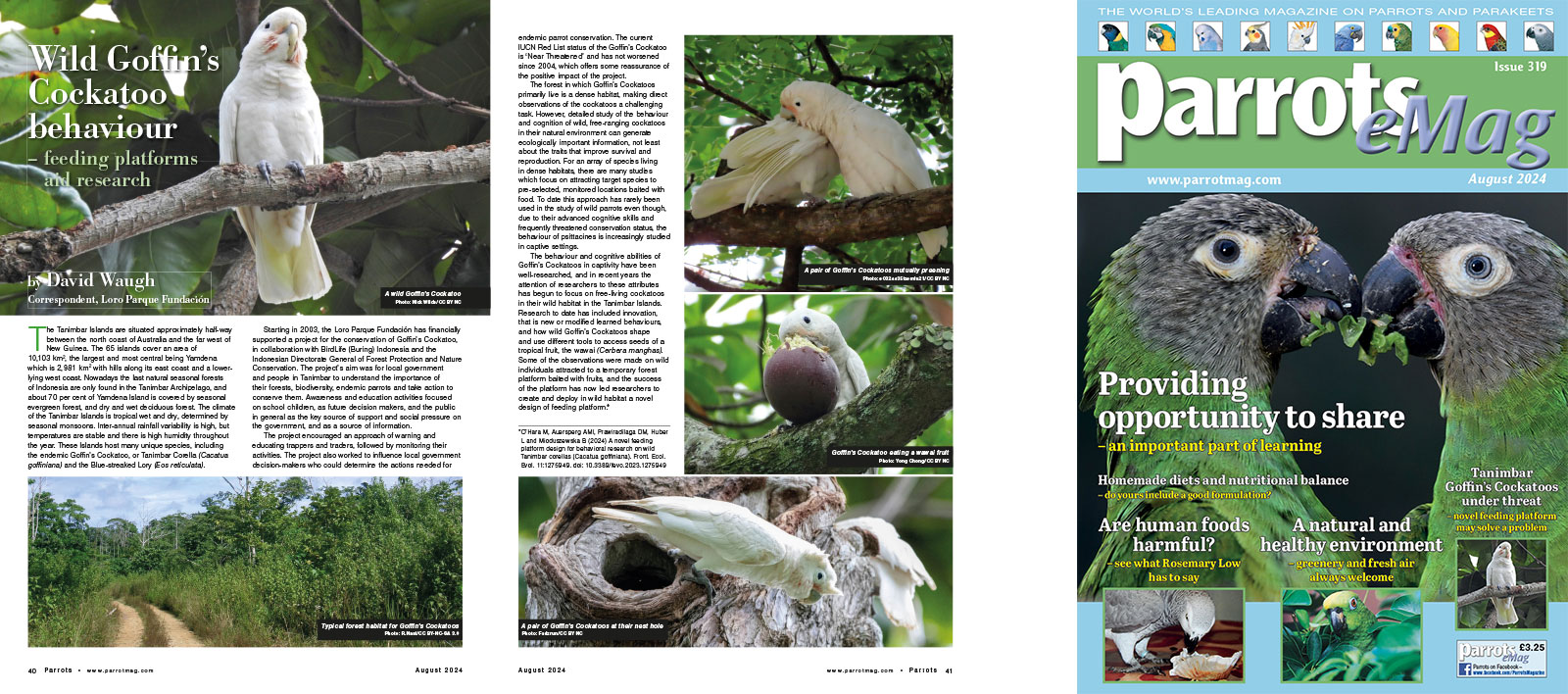
By David Waugh, Correspondent, Loro Parque Fundación
The Tanimbar Islands are situated approximately half-way between the north coast of Australia and the far west of New Guinea. The 65 islands cover an area of 10,103 km2, the largest and most central being Yamdena which is 2,981 km2 with hills along its east coast and a lower-lying west coast. Nowadays the last natural seasonal forests of Indonesia are only found in the Tanimbar Archipelago, and about 70 per cent of Yamdena Island is covered by seasonal evergreen forest, and dry and wet deciduous forest. The climate of the Tanimbar Islands is tropical wet and dry, determined by seasonal monsoons. Inter-annual rainfall variability is high, but temperatures are stable and there is high humidity throughout the year. These Islands host many unique species, including the endemic Goffin’s Cockatoo, or Tanimbar Corella (Cacatua goffiniana) and the Blue-streaked Lory (Eos reticulata).
Starting in 2003, the Loro Parque Fundación has financially supported a project for the conservation of Goffin’s Cockatoo, in collaboration with BirdLife (Buring) Indonesia and the Indonesian Directorate General of Forest Protection and Nature Conservation. The project’s aim was for local government and people in Tanimbar to understand the importance of their forests, biodiversity, endemic parrots and take action to conserve them. Awareness and education activities focused on school children, as future decision makers, and the public in general as the key source of support and social pressure on the government, and as a source of information.
The project encouraged an approach of warning and educating trappers and traders, followed by monitoring their activities. The project also worked to influence local government decision-makers who could determine the actions needed for endemic parrot conservation. The current IUCN Red List status of the Goffin’s Cockatoo is ‘Near Threatened’ and has not worsened since 2004, which offers some reassurance of the positive impact of the project.
